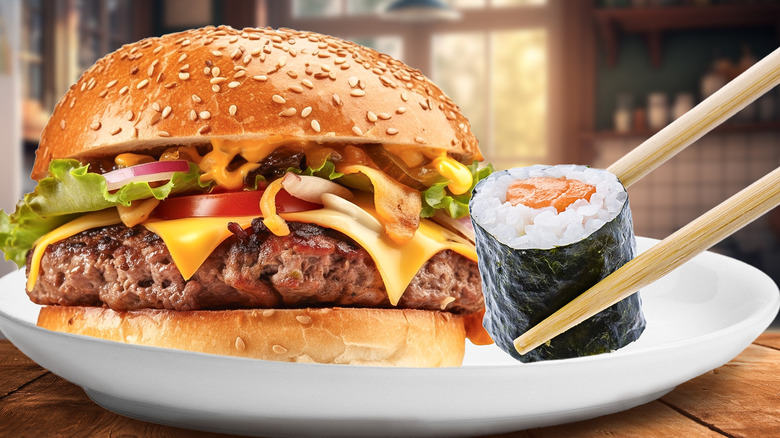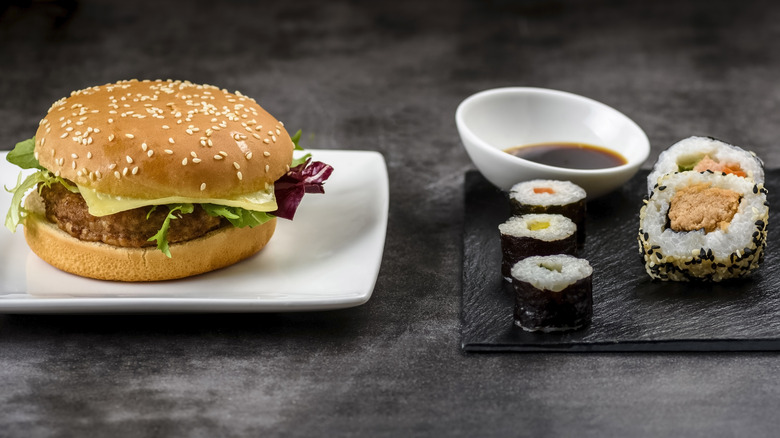If These Two Items Are On The Same Menu, It's A Restaurant Red Flag
There's no shortage of restaurant red flags out there: Unhappy staff, poor health inspector grades, or just plain bad reviews. These are relatively obvious, but there's one more red flag to look for: If a restaurant's menu contains both burgers and sushi on its menu (not to be confused with the presence of a so-called sushi or rice burger on the menu).
Here's why: These two types of food require a whole bunch of disparate elements. For (good) burgers, you'll need the right blend of quality beef freshly ground in the restaurant, a grill station, and a whole bunch of accouterments from buns to cheese, sauces, and lettuce. Plus, a good burger will probably require more attentive sourcing than just ordering whatever cheese, buns, and lettuce a wholesaler offers — as well as someone who can put it all together well.
The same difficulties apply to sushi, but the ingredients you're sourcing are totally different, from quality fish that's safe to eat raw, to rice and nori. Top-notch sushi chefs have very particular training, and a chef who's good with burgers is arguably not so likely to wield those skills (nor would a trained sushi chef have particular expertise in grilling beef patties). Straddling these two specialties — from sourcing the right food to getting the right skilled chefs — is difficult (and sometimes economically challenging) for a restaurant. A restaurant may do either a really good burger, or some really good sushi, but it's far less likely they'll manage to do both.
The broader red flag: menus that do everything
Zoom out a little, and the red flag here isn't just restaurants that do burgers and sushi — it's restaurants that are trying to do too much at once. It's a problem that crops up frequently on shows like Gordon Ramsay's "Kitchen Nightmares," where Ramsay often encounters restaurants with menus so long that chefs struggle to execute most of the items well. Long menus are often cited as a restaurant red flag — there's no magic number on the right number of menu items, but the more items to handle, the more likely a kitchen is to struggle. There are exceptions, too — Chinese restaurants with long menus are often considered high quality.
To get more specific, it's not just long menus that are the problem, but unfocused menus. If a restaurant mixes together (for example) an assortment of Chinese and French dishes, they're likely to run into the same issue as a restaurant serving burgers and sushi on the same menu. Each of these cuisines requires specific skill sets to prepare well, and it'll be tough for a restaurant to pull off both. Again, there may be exceptions — a fusion restaurant is more focused and may showcase the work of a more creative chef who can mix influences together smoothly. However, if the menu is offering up classic beef bourguignon alongside traditional ma po tofu, there's a good chance you won't be wowed by either dish.

